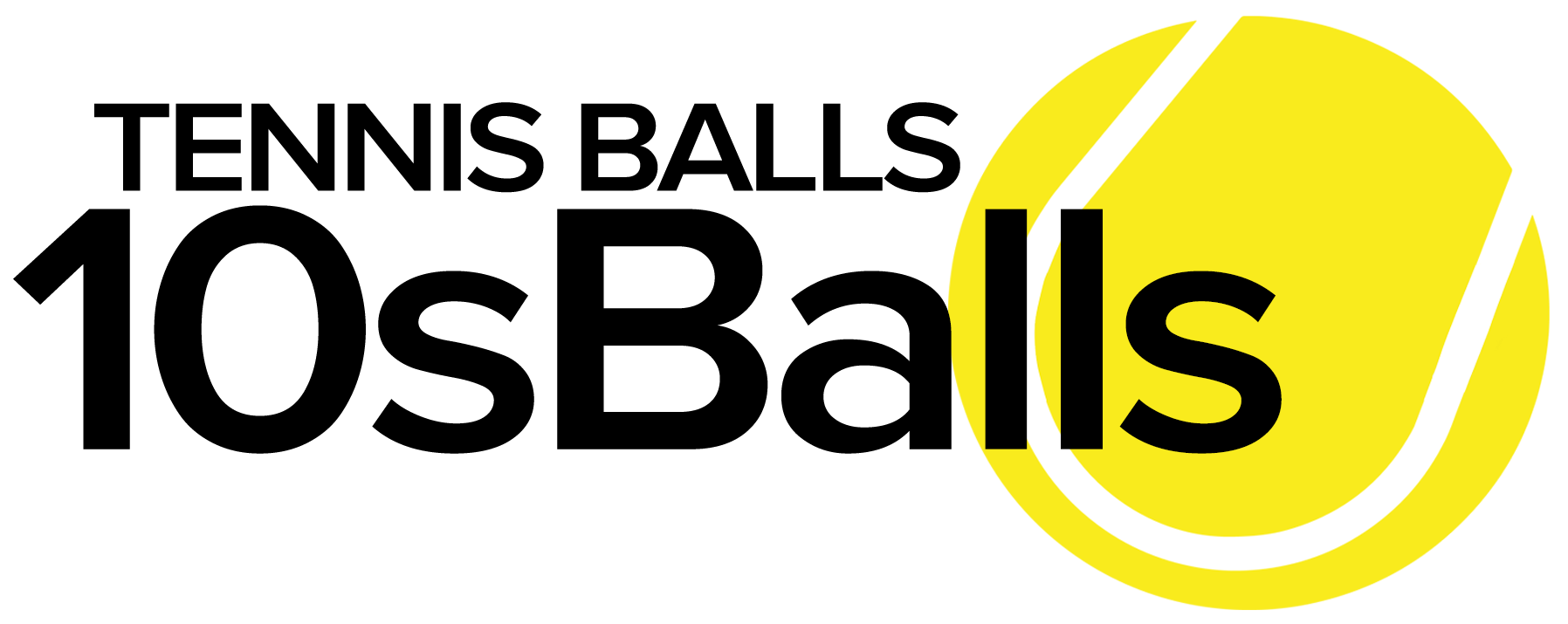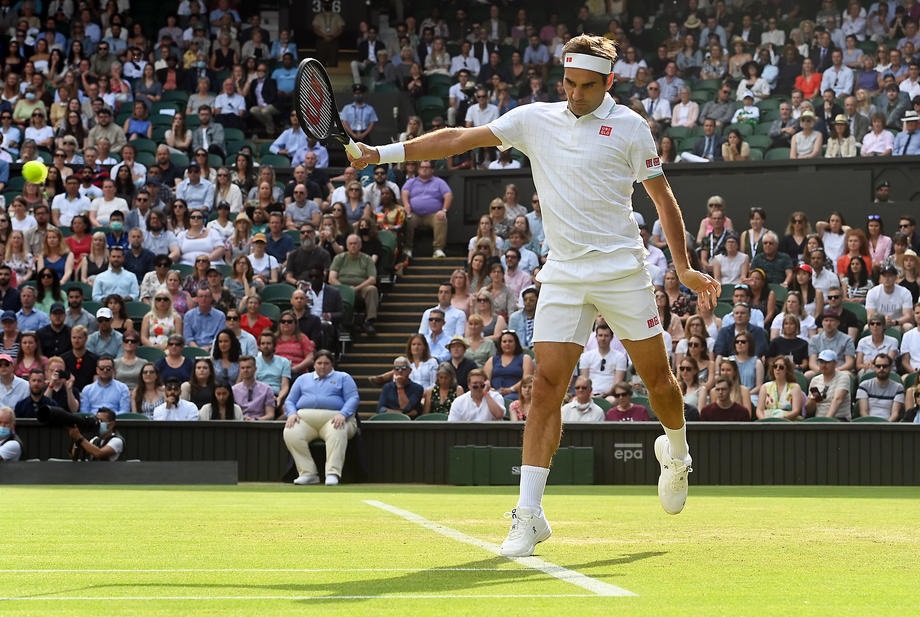- Ricky’s pick for the Australian Open quarterfinal between Sinner and De Minaur
- Australian Open Draws and Order Of Play for Wednesday, January 22, 2025
- Goran Ivanisevic Is No Longer Coaching Elena Rybakina
- Ricky’s pick for the Australian Open quarterfinal between Alcaraz and Djokovic
- Australian Open Draws and Order Of Play for Tuesday, January 21, 2025
- Tennis Report From Australian Open: Novak Making A Run by Alix Ramsay
- Australian Open Draws and Order Of Play for Monday, January 20, 2025
- Five-set frenzy continues in third round of Australian Open
- Australian Open Draws and Order Of Play for Sunday, January 19, 2025
- Pam Shriver’s Car Containing Grand Slam Trophies Stolen in California
- FREE GIFT WITH PURCHASE Of Incrediwear Supports
- Australian Open Tennis 2025 by Alix Ramsay
- Ricky’s picks for Day 6 of the Australian Open, including Djokovic vs. Machac
- Australian Open Draws and Order Of Play for Friday, January 17, 2025
- Solinco Launches All-New Whiteout V2 Racquet
Novak Djokovic Wins But Now He Wants Some Answers • And are Covid Bubbles Bubbles?
- Updated: February 16, 2021

By Alix Ramsay
Novak Djokovic is through to the semi-finals of the Australian Open. There is nothing new in that: this is his ninth semi-final and, to date, he has never lost one. In fact, he either loses in the quarter-finals or earlier or he wins the title. That is one hell of a formula to use at a grand slam.
But what is new is the situation he now finds himself in. On Tuesday he came through a four set rollercoaster – his description, not mine – against Sascha Zverev, taking three and a half lung-bursting hours to win 6-7, 6-2, 6-4, 7-6. After the first set, he began to feel better: the abdominal injury that almost upended him on Friday began to warm up; he was able to move better and swing more freely. This was the best he had felt since the injury happened. Yet after such a long and physical match, he has no idea how he will pull up on Wednesday morning.

On the other side of the net, Zverev was playing with his stomach taped – he, too, had pulled his abs earlier in the tournament. Before Zverev got on court, Grigor Dimitrov had shuffled out of the Rod Laver Arena barely able to move after his back went into spasm against Aslan Karatsev. He lost 2-6, 6-4, 6-1, 6-2 but he was not expecting much from the day: his back was so bad, he couldn’t bend to put his socks on before the match.
At the same time. Melbourne is still in lockdown. There are hopes that the city will be freed on Thursday – and that the fans can come back to the tennis – but that will only happen if no further positive Covid cases are found on Wednesday.
In the middle of all of this, Djokovic wanted some answers. The number of injuries to players from all parts of the ranking ladder prove that two weeks of quarantine is not just annoying and frustrating, it is physically dangerous for any athlete attempting to compete at the top level. And while this is the first time the players have had to go through the quarantine process, many other countries are following Australia’s example and are shutting their doors to international travellers. Quarantine is now a way of life.
“Now you have Berrettini, even Rafa coming in with a back injury, myself, Sascha, as well, struggled, Dimitrov. I mean, obviously it has something to do with these kinds of circumstances that we were in. Coming into a grand slam, and a tournament before the grand slam, just right after 14 days’, 15 days’ quarantine. I mean, for some guys it was even tougher than it was for me and maybe some of the other top guys, I mean, for sure. I can’t complain comparing to some of the players that couldn’t exit their room for 14 days.
“Top players are the ones that are fittest,” Djokovic said. “It has been proven in the past that that’s the case.

“I don’t want to sit here and complain about what we have been through, but we have to be honest and realistic that it has an effect on the physical well-being of players. Of course, also mental, emotional, but physically, this is not normal.
“It is what it is at the moment. We are hoping that it’s temporary. But talking to a lot of players, majority of the players just don’t want to go ahead with the season if we are going to have to quarantine most of the tournaments.
“I want to understand how our continuation of the season post-Australia is going to look like, because this definitely is not good for players in terms of their well-being.”
Djokovic has spoken to some of the ATP Player Council members and they, in turn, have been in long discussions with the ATP. Many tournaments took a huge financial hit last year during the lockdown and even now, with no fans allowed at most events, the financial future looks bleak. There is not nearly so much money sloshing around the tennis tank these days.
The grand slams are unique: they are money making machines and in Australia, the total prize fund is more than AUS$80 million. True enough, the champion will take a 33 per cent pay cut on last year but those lower down the pecking order will take home more for their early round losses. That is fine for now, but what happens when the players get back to the weekly grind of the regular tour?
“If you want to talk about financial aspects, obviously here we are getting the prize money that we are usually getting,” Djokovic said. “So obviously I think that’s one of the biggest reasons why a lot of players just came and said, OK, we’ll accept 14 days’ quarantine.
“But that’s not going to be the case on the ATP events, especially 250, 500. It’s huge prize money reductions. So for the lower-ranked players, I have heard a lot of complaints. Challenger players, a lot of complaints.
“I’m not pointing fingers at anybody. It’s just I’m speaking what is going on, speaking the truth, am speaking the reality, and we have to talk about it. We have to find a way whether it’s something like an NBA bubble, because I heard some players talk about that, and I don’t mind to discuss about that kind of idea. Select one place and we play all the tournaments on that surface and that place. You know, three, four weeks in, three, four, two, three weeks’ rest, then back again. Something like that. I don’t know. On the top level.”
Even travelling in a secure bubble – confined to the hotel and courts, no mixing with the local community – has its drawbacks. The new rule allowing only two team members per player means that those with families will not see their nearest and dearest for months on end. Yet, that is bearable if those players are allowed to compete at their top level – and that means no quarantine.
Europe is the biggest worry for the world No.1. Once Miami is over, the focus will be on the European events spread across a range of countries. But if every country demands a quarantine period for all visitors, the tour become unworkable.

“So we are basically going to be in a bubble every tournament all year regardless where we are,” Djokovic went on. “Which is, you know, fine if there is no quarantine, but I have been hearing that there are some countries that don’t want to accept people coming in from some specific countries because of the virus strains, different virus strains, so forth, and transmission, and God knows what.
“I don’t know how we’re going to handle with that, honestly. But we have to address this very quickly, I mean, because season already started. The physical well-being of players is a big question mark, and I think it needs addressing.”
The more immediate question that Djokovic needed to address was that of Aslan Karatsev. To make his main draw debut at a grand slam and get all the way to the semi-finals was a remarkable achievement and one that Dimitrov wanted people to recognise. Yes, Dimitrov was injured but the world No.114 (although he will rise to No.42 as of Monday), for all his inexperience at this level, still stuck his guns and earned his win. This was, in Dimitrov’s opinion, Karatsev’s day and he deserved all the credit in the world. And Djokovic tended to agree.

“I have seen him play during the tournament here, and he impressed me, impressed a lot of people,” Djokovic said. “His movement, his firepower from baseline. Flat backhand, Russian school, great backhand. Looks to run around. Also hits some good forehands, dictate the play.
“And he is impressive. I mean, two sets down against Felix coming back. Today as well he was just very solid against Grigor. Unfortunately, and obviously Grigor couldn’t play at his best from the end of that second, beginning of the third. But he’s there for a reason, and congratulate him for great success. It’s going to be our first encounter. Hoping I can be physically fit and looking forward to it.”
As ever, it will all depend on Djokovic. If the world No.1 is fit, no one is giving Karatsev a chance – and even if he is not fit, it is still an all but impossible task (just ask Taylor Fritz, Milos Raonic and now Zverev; they couldn’t find a way to win against the wounded champion). And then there is Djokovic’s magic formula: reach the semis and walk off with the trophy. He’s done it eight times before, after all.






